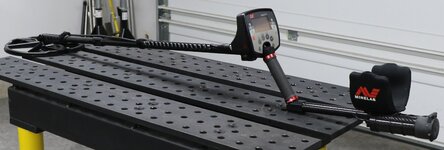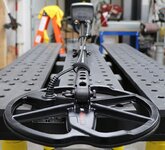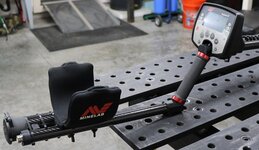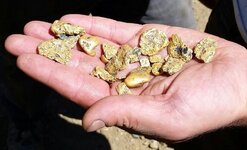CharlesUpstateNY
Sr. Member
- Nov 13, 2015
- 263
- 305
- Primary Interest:
- All Treasure Hunting
Okay 6 hours in the field and I have a few questions...
1. DISC - I'm used to hunting in all metal with a chatty machine, lowered Disc to 0.0, got a solid signal on a zinc cent, lowered Disc to -6.4 and it destroyed the signal, barely any hint of the coin. What's a good all metal setting for Disc?
2. I read that target normalization bunches targets up near the high conductive coins. Would turning normalization off in say 8kHz move crown caps down away from the coins? With normalization On, the crown caps ID all over the coin signals 89-99. Am I correct to assume an 98-99 is a crown cap or hot rock?
3. Observation - I swept a target from left to right, the tone started high and ended higher so increased in pitch as I swept it. Swept the same target from right to left and just the opposite, the tone started high and ended lower so decreased in pitch as I swept it. I'm talking like say 90 to 94 vs 94 to 90. Just wondering if the machine is trying to tell me something or if this is meaningless.
4. Observation - I dug more crown caps yesterday than I have dug in years of hunting with my Explorer SE Pro lol. Just want to confirm something, the crown cap gave a high tone as I swept it, then added this 'thack' sound, like tapping two pieces of wood together, hollow like an echo, almost white noise or like holding a sea shell up to your ear, so 90% high tone with a 10% short 'thack' tacked onto the end of the tone as the coil came off the crown cap. On my Explorer SE Pro crown caps POP, high tone with a very distinct POP as the coil comes off the crown cap. On the Deus just like to confirm this 'thack' confirms crown cap, and doesn't do this on other targets like coins?
My settings
Notch 00-00
Disc 0.0
Full Tones
Sens 90
TX Power 2
Freqency 8kHz
Iron Volume 0
Reactivity 2
Silencer -1
Audio Response 4
Audio Overload 1
ID Normalization On
1. DISC - I'm used to hunting in all metal with a chatty machine, lowered Disc to 0.0, got a solid signal on a zinc cent, lowered Disc to -6.4 and it destroyed the signal, barely any hint of the coin. What's a good all metal setting for Disc?
2. I read that target normalization bunches targets up near the high conductive coins. Would turning normalization off in say 8kHz move crown caps down away from the coins? With normalization On, the crown caps ID all over the coin signals 89-99. Am I correct to assume an 98-99 is a crown cap or hot rock?
3. Observation - I swept a target from left to right, the tone started high and ended higher so increased in pitch as I swept it. Swept the same target from right to left and just the opposite, the tone started high and ended lower so decreased in pitch as I swept it. I'm talking like say 90 to 94 vs 94 to 90. Just wondering if the machine is trying to tell me something or if this is meaningless.
4. Observation - I dug more crown caps yesterday than I have dug in years of hunting with my Explorer SE Pro lol. Just want to confirm something, the crown cap gave a high tone as I swept it, then added this 'thack' sound, like tapping two pieces of wood together, hollow like an echo, almost white noise or like holding a sea shell up to your ear, so 90% high tone with a 10% short 'thack' tacked onto the end of the tone as the coil came off the crown cap. On my Explorer SE Pro crown caps POP, high tone with a very distinct POP as the coil comes off the crown cap. On the Deus just like to confirm this 'thack' confirms crown cap, and doesn't do this on other targets like coins?
My settings
Notch 00-00
Disc 0.0
Full Tones
Sens 90
TX Power 2
Freqency 8kHz
Iron Volume 0
Reactivity 2
Silencer -1
Audio Response 4
Audio Overload 1
ID Normalization On










